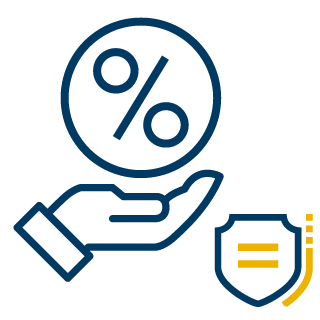Monetary Policy Report, July 2023
The Colombian economy continued to register high levels of economic activity, the labor market continues to improve, and inflation declined somewhat faster than anticipated. Inflation is expected to continue to decline in the coming quarters and converge closer to the target by the end of 2024. Household and business spending is projected to ease further after very strong growth in 2022 and approach values more consistent with the economy's sustainable productive capacity.
As foreseen in the April Report, inflation began to fall in the second quarter of 2023. It is expected to continue declining in the following quarters and return near the 3% target by the end of 2024.
- In June 2023, inflation reached 12.1%, down from 13.1% in March and completing three consecutive months of declines.
- The main factors contributing to the decrease in inflation have been:
- Moderation in food price increases due to good local agricultural supply and decreases in the international prices of imported food.
- A drop in the exchange rate against the US dollar and falling transport costs (e.g. freight), which reduces the upward pressures on prices of goods, mainly imported products.
- The cumulative effects of monetary policy interest rate increases are reflected in a credit slowdown and lessening firm and household spending.
- In contrast, the sticky prices of some services and the requisite increases in the gasoline price have prevented further inflation reductions.
- The positive behavior of food prices is anticipated to continue and core inflation (which excludes food and regulated items) is expected to start easing in the coming months.
- Going forward, additional fuel adjustments will continue to curtail inflation reductions, although these adjustments would decrease in 2024, which would contribute to bringing inflation closer to Banco de la República's 3% target.
- The inflation trajectory remains highly uncertain. The main risk factors surround the ambiguity regarding the behavior of the exchange rate, the pace of adjustments in household, government, and corporate spending, pending decisions regarding the price of fuel and electricity, as well as the possible occurrence of an El Niño phenomenon.

Economic activity continues to show dynamism, but now at a more sustainable pace. By yearend, it is expected to approach levels compatible with the productive capacity of the economy and with the convergence of inflation towards the 3% target. In 2023 and 2024, economic growth would be close to 1%.
- Economic activity levels remain high, despite the recent deceleration.
- This slower growth is necessary for production and spending to assume more sustainable trajectories over time and to reduce the pressures of excess spending on inflation.
- The deceleration has been reflected in a drop in imports and reduced investment in machinery and equipment along with a slowdown in household consumption.
- This is a healthy correction of the economy and allows the current account deficit, which was quite high in 2021 and 2022, to narrow.
- The labor market continues to perform well, with sustained growth in job creation and an unemployment rate that continues at historically low levels.
- The Bank's technical staff forecasts economic growth of 0.9% for 2023 and 1% for 2024.
- This projection is subject to strong uncertainty due to external factors, such as global political tensions, and the effects of monetary policy in advanced countries on economic growth and the price of goods exported to Colombia. There is also uncertainty due to internal factors such as the impact of reforms to be implemented and the response of firm and household spending to current financing conditions, among others.
- These estimates remain subject to a high degree of uncertainty owing to external factors such as global political tensions and the effects of monetary policy decisions in advanced economies on economic growth and the prices of goods exported by Colombia. There is also uncertainty surrounding domestic factors that include the impact of the government’s reform proposals and the response of firm and household spending to current financing conditions, among others.

The current monetary policy interest rate (13.25%) level is necessary to continue converging the inflation’s downward trajectory to the 3% target and contribute in this manner to the sustainable economic growth of the Colombian economy.
- At its meetings in June and July 2023, the Board of Directors unanimously voted to maintain the interest rate unchanged at 13.25%, consistent with the objective of bringing inflation to the 3% target by the end of 2024.
- This stance is consistent with the still high levels of inflation, forecasts, and expectations that surpass the 3% target, along with continued excess spending that places upward pressure on some domestic prices.
- The Banco de la Republica will continue to monitor our economy and main risks to make the appropriate decisions for the economic well-being of the nation.

For more information, review "Chapter 1: Summary".


 Reports
Reports Presentations (only avialable in Spanish)
Presentations (only avialable in Spanish) Boxes
Boxes

















































